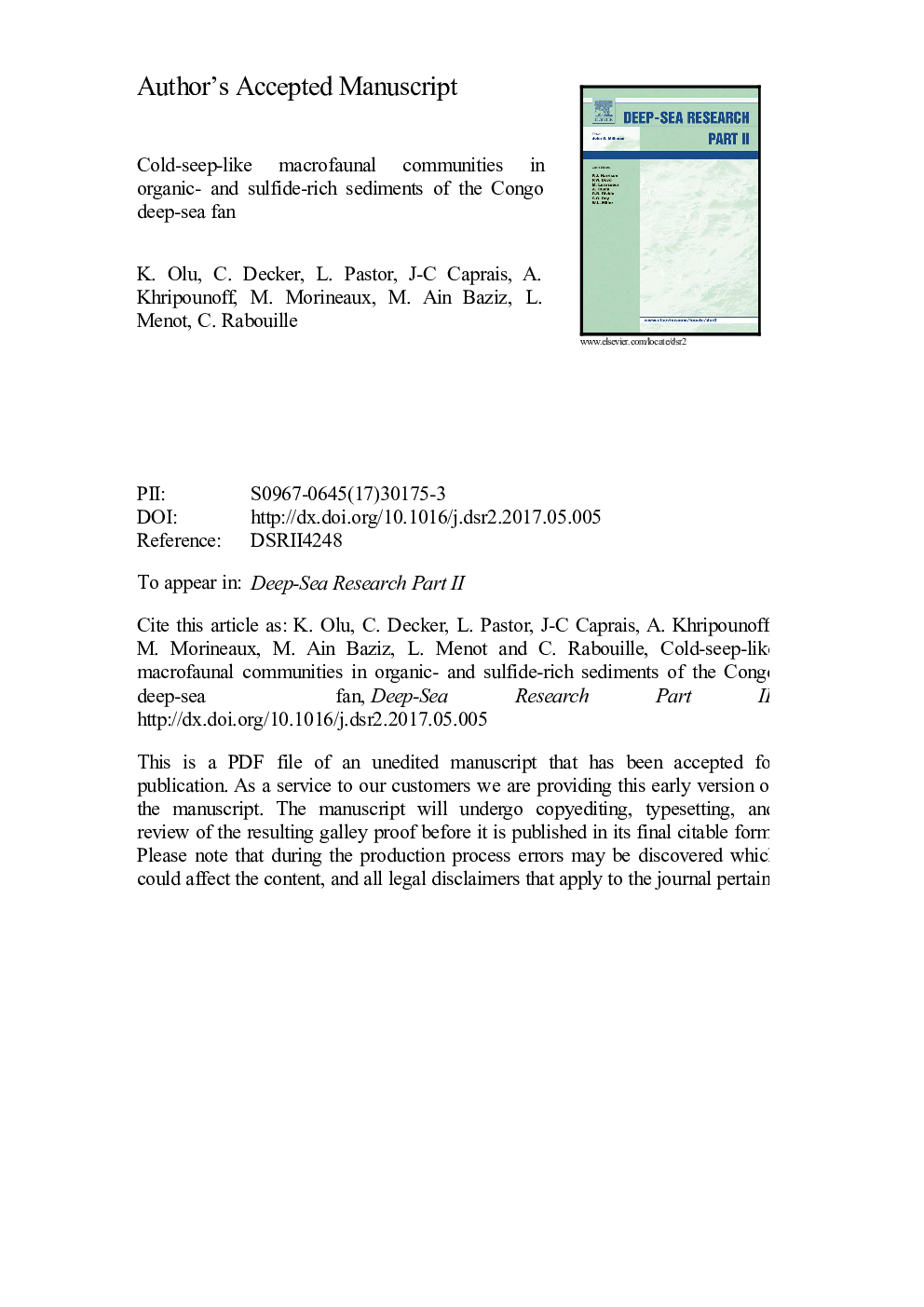| کد مقاله | کد نشریه | سال انتشار | مقاله انگلیسی | نسخه تمام متن |
|---|---|---|---|---|
| 5764808 | 1626400 | 2017 | 59 صفحه PDF | دانلود رایگان |
عنوان انگلیسی مقاله ISI
Cold-seep-like macrofaunal communities in organic- and sulfide-rich sediments of the Congo deep-sea fan
ترجمه فارسی عنوان
جوامع ماکرو فونال سرد در مقایسه با رسوبات غنی از آلی و سولفیدی طرفداران عمیق دریای کنگو
دانلود مقاله + سفارش ترجمه
دانلود مقاله ISI انگلیسی
رایگان برای ایرانیان
کلمات کلیدی
موضوعات مرتبط
مهندسی و علوم پایه
علوم زمین و سیارات
زمین شناسی
چکیده انگلیسی
The exceptionally high organic content of the surface sediment in the active lobe complex was correlated with unusual densities of macrofauna for this depth, enhanced by a factor 7-8, compared with those of the older, abandoned lobe, whose sediment carbon content is still higher than in Angola Basin at same depth. Macrofaunal communities, dominated by cossurid polychaetes and tanaids were also more closely related to those colonizing low-flow cold seeps than those of typical deep-sea sediment. In reduced sediments, microbial mats and vesicomyid bivalve beds displayed macrofaunal community patterns that were similar to their cold-seep counterparts, with high densities, low diversity and dominance of sulfide-tolerant polychaetes and gastropods in the most sulfidic habitats. In addition, diversity was higher in vesicomyid bivalve beds, which appeared to bio-irrigate the upper sediment layers. High beta-diversity is underscored by the variability of geochemical gradients in vesicomyid assemblages, and by the vesicomyid population characteristics that vary in density, size and composition. By modifying the sediment geochemistry differently according to their morphology and physiology, the different vesicomyid species play an important role structuring macrofauna composition and vertical distribution. Dynamics of turbiditic deposits at a longer temporal scale (thousands of years) and their spatial distribution in the lobe area also resulted in high heterogeneity of the “cold-seep-like communities”. Dynamics of chemosynthetic habitats and associated macrofauna in the active lobe area resembled those previously observed at the Regab pockmark along the Congo margin and rapid succession is expected to cope with high physical disturbance by frequent turbiditic events and huge sedimentation rates. Finally, we propose a model of the temporal evolution of these peculiar habitats and communities on longer timescales in response to changes in distributary channels within the lobe complex.
ناشر
Database: Elsevier - ScienceDirect (ساینس دایرکت)
Journal: Deep Sea Research Part II: Topical Studies in Oceanography - Volume 142, August 2017, Pages 180-196
Journal: Deep Sea Research Part II: Topical Studies in Oceanography - Volume 142, August 2017, Pages 180-196
نویسندگان
K. Olu, C. Decker, L. Pastor, J.-C. Caprais, A. Khripounoff, M. Morineaux, M. Ain Baziz, L. Menot, C. Rabouille,
